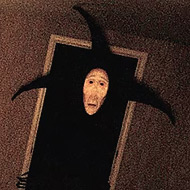
OBELISK is a mind-bending analog horror game that draws players into a decaying broadcast full of cryptic visuals, looping realities, and an ominous black tower that never stops watching. More than just a game, OBELISK feels like a cursed artifact — once you enter, it distorts not only the virtual world, but your own sense of time, space, and safety.
The experience of OBELISK begins like an intercepted television signal. Grainy filters, corrupted sound design, and static overlays suggest something you’re not supposed to be seeing. There’s no formal tutorial. No guidance. Just a remote world and an ever-present monolith looming in the distance — a constant reminder that something ancient and wrong has been unearthed.
• Found Footage Feel: Everything is viewed through the lens of a broken camera feed, adding layers of dread and distortion to every scene.
• Looping World Structure: Players often find themselves back in familiar places, only slightly altered, as if the world itself is unraveling or rewriting.
• Psychological Threat: The horror isn’t about jump scares — it’s about realizing you’re being studied, predicted, maybe even replicated.
The gameplay of OBELISK is minimalist but deliberate. Progression relies not on combat, but interpretation. Each area hides clues through abstract symbolism and strange patterns. Players must interact with the obelisk itself, triggering changes in the environment or slipping between dimensions.
• Glyph Interaction: Strange symbols etched into surfaces glow when approached. Arranging them in the correct order alters the world.
• Temporal Puzzles: Time does not behave normally. You may need to replay actions or visit corrupted versions of locations to understand their true meaning.
• Passive Surveillance: The obelisk is always present — often not doing anything, but always watching. Players should be cautious about what they trigger.
What makes OBELISK especially haunting is its refusal to comfort the player. It introduces mechanics, then breaks them. Environments change subtly — a room might have an extra door, a hallway may reverse. This isn’t random; it’s intentional disorientation designed to wear you down mentally.
• Visual Corruption: Sudden scanlines, flickers, and blank frames occur at narrative peaks — never predictable, always jarring.
• Paranoia Loop: You may start to question what’s real — was that audio always there? Has this corridor always had that symbol?
• No Pause, No Escape: Pausing doesn’t stop the static. Quitting might not either. It’s part of the illusion that you’re never truly in control.
OBELISK is a game that lingers — not through cheap frights, but by instilling an unshakeable feeling that you’ve touched something that was meant to remain buried. For fans of analog horror, cryptic lore, and immersive psychological experiences, this game will leave a mark you won’t easily forget.